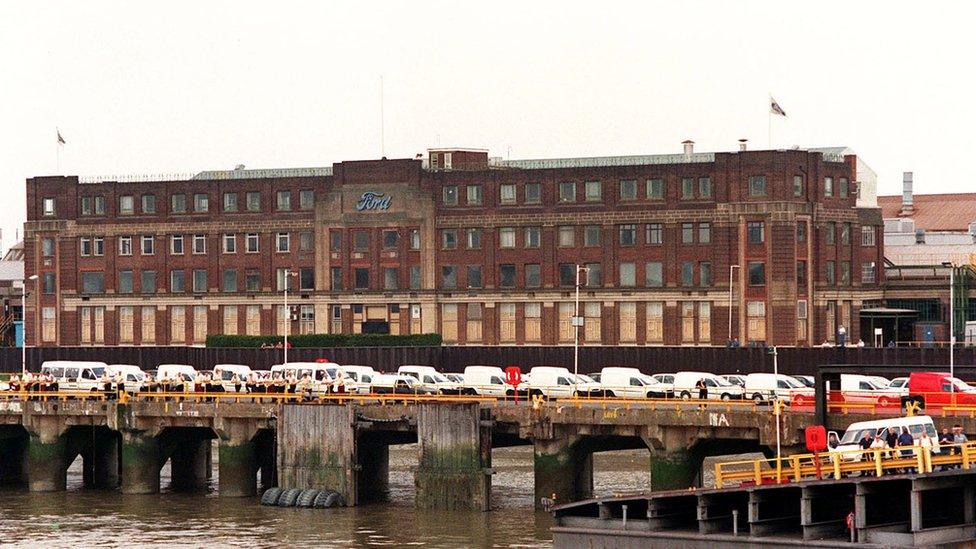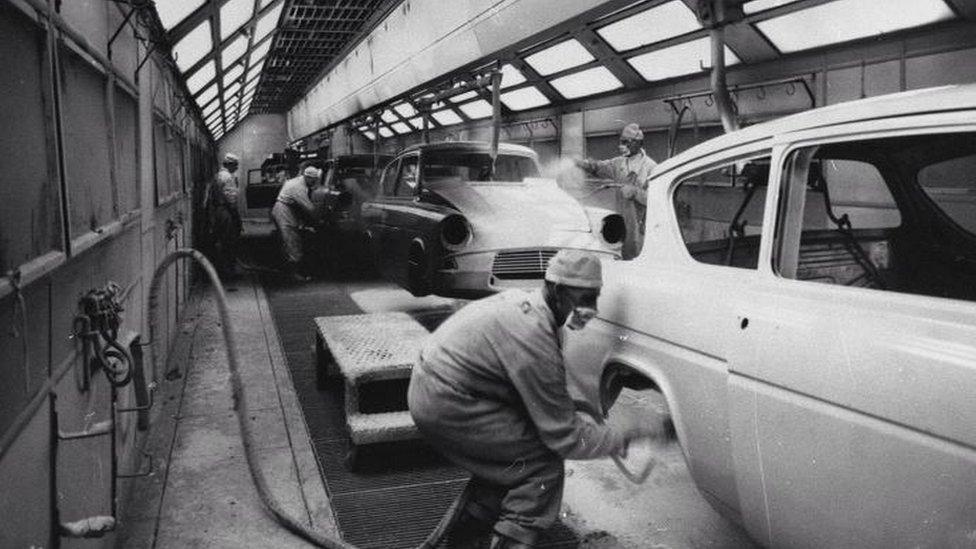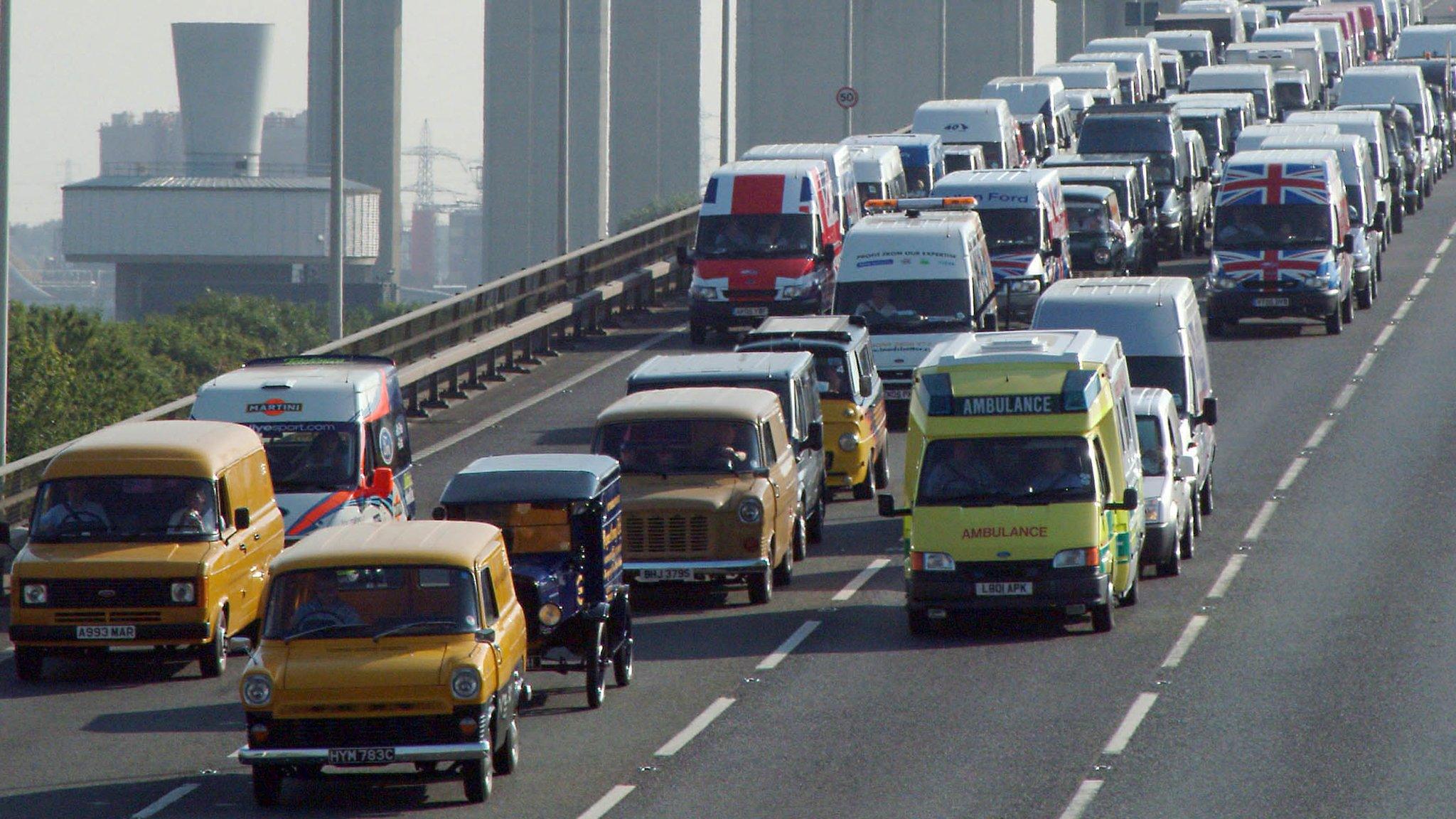Dagenham Ford Factory set to be 3,500-home village
- Published

The original Dagenham factory built almost 11 million cars before it finally closed down
The site of Dagenham's original Ford Factory is set to be turned into a 3,500-home village.
Shops, offices and a school are set to be built on the 45-acre (18-hectare) site of the former car factory, which was demolished in 2013.
Barking and Dagenham Council's planning committee approved the plans on Monday.
Housing developer Peabody said: "This goes beyond a brick and mortar development, this is about building a community for residents."
The Greater London Authority (GLA) will now also consider the plans.
Brendan Sarfield, Peabody's chief executive, said: "Together we have a fantastic opportunity to bring the empty site back into use as part of the exciting new Dagenham Docks neighbourhood.
"Starting with people, we can help bring the place to life, linking in with residents from the Becontree estate and elsewhere to make it a great Peabody neighbourhood for the future."

At its peak, the factory employed 40,000 workers
After opening in 1931, the original factory built almost 11 million cars before it finally closed down, leaving an engine plant continuing to manufacture parts on Ford's behalf in the town.
At its peak, the factory employed 40,000 workers in 1953. When the original plant closed, 1,000 lost their jobs.
A strike by the sewing machinists at the plant in 1968 led to the passing of the Equal Pay Act 1970, and inspired both the film and musical Made in Dagenham.

The West End musical Made in Dagenham was inspired by a strike by sewing machinists at the plant
Under plans designed by Peabody, 3,502 new homes will be built on the empty site.
The planning meeting heard that 47% of the homes would be affordable for local residents, according to the Local Democracy Reporting Service (LDRS).
The plans, which the planning committee voted for unanimously, also include a secondary school for new and existing residents, new streets, parking spaces and a large park.
Most of the new homes would be in small flat blocks between one and 19 storeys tall.
Related topics
- Published25 October 2012
